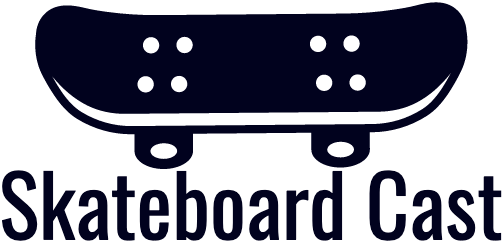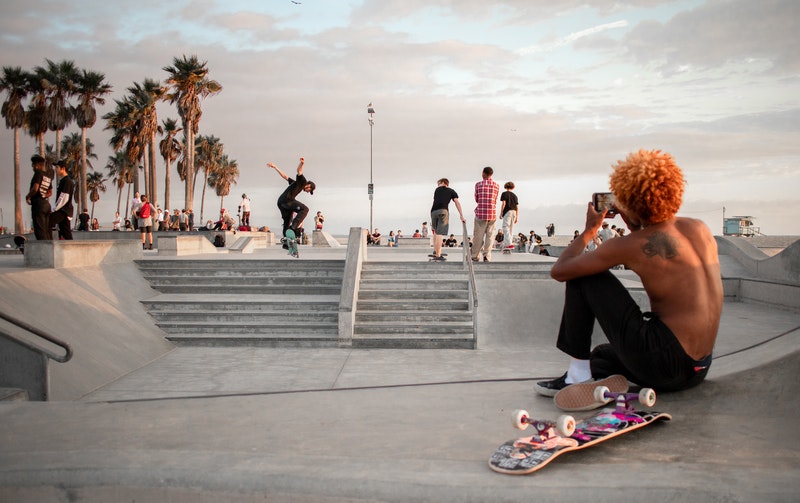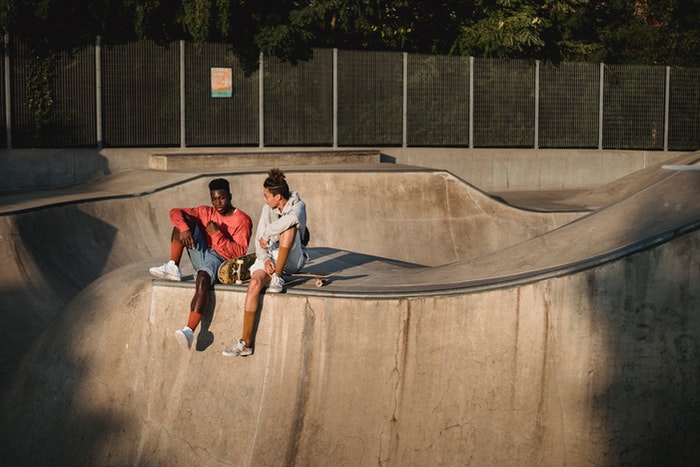Introduce
Bushings are an essential component of skateboarding. But, do you know everything about them? What are bushings on a skateboard? This article of Skateboard Cast will give you an all-in-all introduction to bushings. Let’s read on to learn more about them.
[toc]
What are bushings on a skateboard?
Bushings are the rubber rings fitting around the axle of your skateboard. They let your board spin and rotate smoothly.
Each truck should have two bushings. The top on the hanger aids in the smooth rotation of the truck. Based on how active you like your trucks to be, you may loosen or tighten the bottom bushing on the axle between the base plate and the hanger.
The skateboard truck has two bushings
More tough bushings lead to a more robust board, which can be beneficial when executing feats. Looser bushings are a fantastic alternative for smooth mobility when cruising or cutting the streets. Bushing tightness is contingent on the preferences of each rider. Bushings may change readily to meet their demands.
How do skateboard bushings work?
Bushings are available in a variety of forms and hardness. They have a significant influence on the feel and performance of your skateboard.
Bushings assist you in steering when you lean in a certain direction. This depends on the roughness, your weight, and the amount of pressure you apply.
When you spin, the pressure on your bushings compresses. The angles of your truck’s hanger change as well.
When bushings return to their original state, we talk about rebound. When spinning your skateboard, the pivoting cup is equally important.
If opposed to high-quality bushings, poor bushings are less sensitive and take longer to rebound. When shopping for a new set of bushings, keep in mind that rebound reduces with time. They’ll last you longer and give you greater security.
Bushings feature a board edge and aside, which means one goes on top and the other goes on the bottom. Because it is nearest to the board, the lower bushing bears the brunt of your weight.
When you press the bushing, it absorbs the majority of the forces. The one above is subjected to less strain and serves to keep your truck together by maintaining the lower bushing. The upper bushing will take over after the lower bushing compresses fully.
Skateboard bushing characteristics
Bushing durometer
We use the durometer to detect the firmness of bushings. The durometer needs a Durometer A Scale test, which ranges from 1-100.
Some businesses utilize the B Scale. This scale is 20 points lower and can expand by another 20 points for tougher bushings. As a result, an 80B durometer is equivalent to a 100A durometer.
Because softer bushings are simpler for your hanger to bend, they are also easier to turn on. Stiffer turns are the result of harder bushings. Furthermore, the tightness or looseness of your bushings affects the turn response of your skateboard.
Some durometer in A scale
Bushing shape
The form of bushings is another important consideration. Skateboarders have been testing different bushing designs to enhance their rides.
Certain bushings are symmetrical from top to bottom. Meanwhile, the two bushings in some pairs have different forms.
Skateboard bushings come in three main shapes: eliminator, barrel, and conical. There are a few typical bushing types based on how these forms combine and match within a set.
Here’s a rundown of the most common bushing styles available today:
Some of the bushing styles
Cone – barrel
Because of their versatility, this is the most popular form for bushings. The conical upper bushing produces a lot of deck lean, enabling it to carve. The lower bushing has a barrel shape, which helps it to fit snugly into the bushing seat.
To optimize the possibilities of ordinary bushings, many riders place a stronger durometer bushing on the bottom.
Double barrel
The bottom and top bushings are similar. Both have barrel shapes. These bushings are also downhill because of their increased stability, making them an excellent option for downhill skateboarding at full speed.
They won’t spin more than a conical bushing, but it can be mitigated by selecting a lighter durometer.
Cone
This type has two conical bushings. They are also super carving bushings since they offer a lot of lean decks. Their designs are suitable for sharp and carving twists.
Double stepped
Stepped bushings feature indents carved out on the bottom and top, comparable to barrel bushings.
When you bounce your skateboard with two stepped bushings, you get a lot of lean friction and a lot of bounce.
Even if you choose a lighter durometer, double-stepped bushings will result in very rigid trucks.
Barrel – stepped
The combination of a barrel on top and a stepped bushing on the bottom gives the trucks a lot of consistency. This is an excellent option for downhill longboarding when stability trumps quick turns.
This top-to-bottom combination of bushings will provide a lot of bounce.
Relevant components to the bushings
Seats
A bushing seat is just the scooped area surrounding the hanger aperture in which the bushings will lay. The axle fits into the aperture, and the bushings then wrap around it.
The seats’ main objective is to strengthen the bushings and prevent them from bending too much under ride force.
Seats strengthen the bushings
The bushing seats have two types: open and restricted. Restrictive seats have higher walls, allowing the bushings to fit snugly. Because open seats are shallower, they strain the seat less and provide less friction.
It’s critical to fit the seats with the correct bushings. You’d better carry it out regardless of whatever bushing seat form you pick. Your tastes and the type of skating you perform are important too. They determine how tight the seats should grip the bushings.
Washers
Washers are spherical metal washers that go beneath each bushing. They get fitted by slipping them on the axle. Washers can keep the bushings from deforming due to the pressure applied to the trucks.
When you buy a skateboard, you’ll get four washers. The washers in most packages will be the same size. However, some manufacturers may provide two smaller washers for the top and two bigger washers for the bottom.
Bushing washers come in various shapes and sizes, with the edges either flat or slightly curved. Flat washers enable the bushings to move more laterally and flex a little more.
The curved washers control the busing action. It avoids the bushings from twisting or blasting out entirely.
To put it another way, flat washers have minimal resistance. On the other hand, curved washers have more resistance.
To work effectively, the form of the washer you pick should fit the form of the bushing you’re employing.
Also, avoid using curved washers with extremely soft bushings. This is because the washer might cut into the bushings and cause damage.
Frequently Asked Questions
1. What if the bushings wear down?
Bushings frequently wear down over time, causing your trucks to become floppy and unstable. It results in a lot of wheel bite. If one or both sides of your bushings get split or crushed, it’s definitely time to replace them.
2. How is the bushing different from the bearing?
A bushing is a sort of bearing, which is the distinction between bearings and bushings. Bushings are distinct equipment. Yet, bearings are a generic word for everything that permits motion between two parts. Unlike rolling bearings, bushings come with a single piece.
3. How often should I change the bushings?
If you often replace the bushings, changing your axle nuts once a year or every six months is a smart idea.
4. How can I soften my bushings?
First, boil the water. Allow 10 to 15 minutes for the bushings to soak in the saucepan. Take the bushings out while they are hot. Do not lift them out from the water with your hands.
| See more: |
Conclusion
After all, what are bushings on a skateboard? You may have your own answer to the questions. Every component in the skateboard may affect your skating experience. Remember to check them carefully after use.
If you have any further information, please feel free to contact us. Hopefully, you find this article helpful.
Thank you for reading!
Reference: Skateboard Bushings



